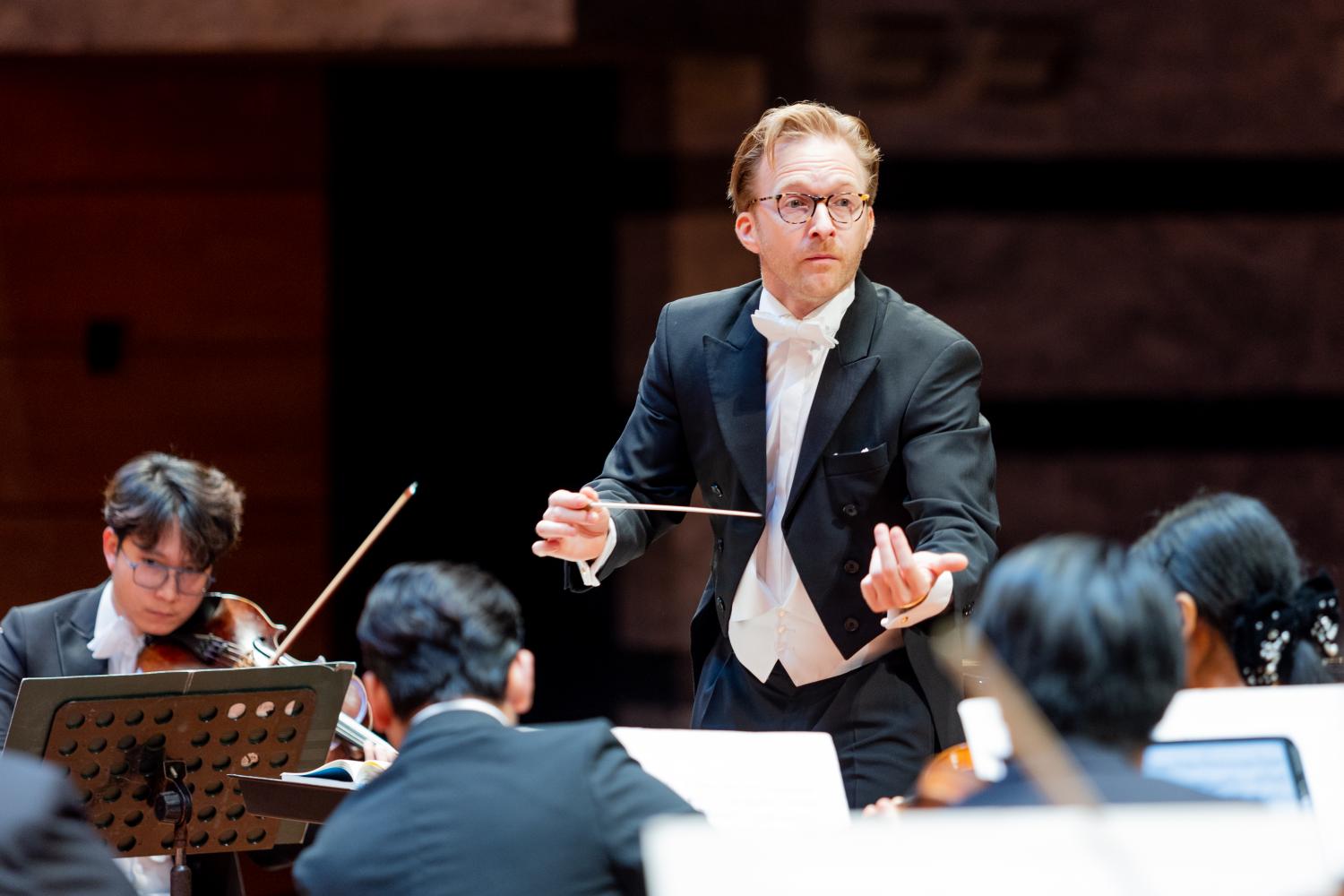Presented in collaboration with the Tourism Authority of Thailand and B.Grimm, the Royal Bangkok Symphony Orchestra continued their wonderfully varied 2023 concert season at the Thailand Cultural Centre earlier this month with a programme devoted entirely to the incomparable genius of German composer Felix Mendelssohn.
The irresistibly genial Ruy Blas overture opened the concert in rousing fashion, setting the stage for an enchanting duo soloist appearance from brothers Niklas and Nils Liepe from Hamburg, Germany. Whilst Niklas is absolutely no stranger to the RBSO or the TCC, this was his younger brother's debut here. They performed a true, relatively unknown gem from Mendelssohn's youth, the Concerto For Violin, Piano And Orchestra In D Minor, which, incredibly, the composer wrote at the tender age of 14. Completing the all-Germanic theme of the evening, conductor Christian Kunert (born in Esslingen) made his own first and long-awaited appearance with the Royal Bangkok Symphony Orchestra, interpreting after the interval a substantial offering of the incidental music to Shakespeare's A Midsummer Night's Dream.
Ruy Blas started most splendidly, the 1st violin section runs convincing in their virtuosity; whilst the cello, clarinet and bassoon counter-melody was amply rich and sonorous. The brass produced a pleasing section timbre, with the entire orchestra achieving a good balance between energy and refinement on the whole as this perennial favourite unfolded in all its glorious inventiveness.
The Double Concerto In D Minor bears all the qualities of exuberant, youthful exploration and idealistic high-spiritedness, not least in the ambitious dimensions of the work, nor indeed as regards the virtuosic demands of the solo parts. Mendelssohn wrote the work for himself on piano and Eduard Rietz, his violin teacher and frequent participant in the family's Sunday soirées. The youngster was clearly eager and aiming to impress. At about 18 minutes, the opening allegro is one of the longest concerto movements Mendelssohn ever composed.
An agitated, staccato opening theme contrasted with a rather more lyrical major-key motive, as the brothers Liepe set out their stall for this engaging performance. Niklas rendered an eloquent recitativo violin solo at the centre of the movement, whilst the duo together positively revelled in wild virtuosity throughout much of the allegro, culminating in an imposing, written-out cadenza towards the movement's close. The slow movement, with its muted violins and violas, is the radiant heart of the composition. Nils entered alone at first on piano, later exchanging leading and accompaniment roles with the violin. Both Niklas and Nils then introduced the finale's main theme, which the orchestra took up with relish. As in the opening movement, there are numerous flashes of Mendelssohn's characteristic genius here, which would later manifest themselves, fully formed, in the String Octet.

Conductor Christian Kunert.
As regular RBSO audience patrons know well, when it comes to the encore segment of proceedings, Niklas Liepe likes to break with convention and surprise the TCC with something totally original. This invariably involves the participation of another musician or indeed musicians on hand at a concert. On this occasion it was the conductor himself, Christian Kunert, who joined the brothers for a modern, jazz-infused arrangement of Paganini's famous Caprice No.24 In A Minor. Before Kunert commenced his career in conducting, he was a top-level bassoonist and until 2018 principal of Hamburg State Opera. The impromptu "Paganini-trio" that ensued was of the most entertaining one-off variety!
The incidental music to A Midsummer Night's Dream is one of music history's greatest flowerings of the imagination, partly the work of Mendelssohn's innocent youth (1827) and partly the product of his more worldly maturity (1843). The famous overture itself and the triumphant closing finale will quite probably be played in any concert selection of course, but in a most deft touch of programming, alternate numbers from the suite were presented in between, starting with the magical 3/8-time scherzo.
Well focused intonation in the woodwind section did the players much credit in the opening chords of the overture, setting the scene nicely for hushed upper strings in Mendelssohn's famous evocation of Shakespeare's mythical fairies by way of an effervescent shimmering texture which displayed admirable staccato control and cool-headedness throughout the ranks of the violin desks. Certainly a difficult piece to negotiate in terms of clean ensemble, there were nonetheless high levels of musicianship on display here.
The scherzo was lightly rhythmic and taken at a comfortable tempo, allowing the superb, clean articulation of the woodwind and strings to project nicely. Allegro appassionato was next, an intermezzo during which the fluidity of the lines suggested zephyrs in the air, mildly Sturm und Drang in their execution, leading to a charming ländler. So lyrical and naturally responsive was the co-ordinated interplay here, one had the impression of experienced chamber music colleagues at work. The nocturne followed with a beautifully relaxed, extended horn solo from Supreeti Ansvananda, balanced by a middle section which pointed stylistically towards the later graceful style of Tchaikovsky.
The famous Wedding March was played with regal splendour and spirited élan, an energy level that carried over into Dance Of The Clowns which featured most amusing "hee-haws" in the violins, referring back to the introduction of Shakespeare's donkey character Bottom in the overture. The serene finale then brought this polished interpretation full circle, closing as it had started with a well-balanced woodwind choir.

